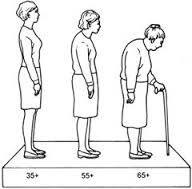Plastic means changeable.
It means that we are not hardwired and can change and adapt in order to better interact with our environment.
Sometimes we get ourselves into a bit of a pickle. We have picked up bad habits, learnt to move in a suboptimal fashion and are slowly but surely developing stress pattern in our tissues.
This cumulative strain leads to tissue stress and eventually breakdown. Reduced movement, dysfunction and pain are only a few steps away!
Part of our job as a physiotherapist is to evaluate the suboptimal movement patterns (whether that be spinally or around the hip or shoulder for example) that can lead to the development of damaging stresses around our joints.
Once these patterns have been identified we have to teach new movement patterns, restoring to factory settings if you like. Teaching simple things such as how to sit, stand and walk for example. Only when the background (or core) has been optimised can we layer on more complex movement patterns on top.
Sometimes during that early relearning phase we can use things like mirrors, tape applied directly onto the skin or even more technologically advanced systems like the DorsaVi (see www.dorsavi.com) to increase the amount of feedback we can give patients. The more feedback you have to more you can help to reinforce optimal movement control in the learning phase.
And just in case you think you are immune to cumulative stress on the body just look below to a normal person exposed to nothing but gravity over 65+ years.
Sustained attention to developing muscles that resist gravity (postural muscles! a.k.a. the core muscles) can dramatically resist this development and be the difference between these two examples:




